 “He who is in love is wise and is becoming wiser, sees newly every time he looks at the object beloved, drawing from it with his eyes and his mind those virtues which it possesses.”
“He who is in love is wise and is becoming wiser, sees newly every time he looks at the object beloved, drawing from it with his eyes and his mind those virtues which it possesses.”
Ralph Waldo Emerson, “The Method of Nature”
Terry Teachout on the arts in New York City
In today’s Wall Street Journal I review the new Broadway revival of Fiddler on the Roof. Here’s an excerpt.
* * *
How often should a classic musical be revived on Broadway? In the case of “Fiddler on the Roof,” which has just opened there for the sixth time since 1964, it’s hard not to wonder whether a point of diminishing returns might possibly be drawing nigh. “Fiddler” is a marvelous show, but the last revival, directed by David Leveaux and starring Alfred Molina, dates from 2004, and it was a fine one, both fresh and faithful. Granted, Bartlett Sher’s new version sports an even more impressive star turn by Danny Burstein, plus new dances by Hofesh Shechter, an Israeli-born modern-dance choreographer. All interesting, all promising—but do we really need another “Fiddler”? Now that I’ve seen this one, my answer is…maybe.
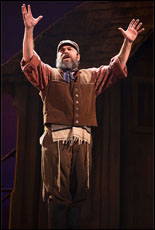 Mr. Sher, as always, has found his own way into “Fiddler,” taking a tack that owes nothing to Jerome Robbins’ original 1964 staging or any other version of which I’m aware, and I was sure for the first 15 minutes or so that I’d be writing a review as enthusiastic as the one I wrote of his letter-perfect Lincoln Center Theater revival of “The King and I.” But no: This production, intelligent and imaginative though it is, falls short of the mark…
Mr. Sher, as always, has found his own way into “Fiddler,” taking a tack that owes nothing to Jerome Robbins’ original 1964 staging or any other version of which I’m aware, and I was sure for the first 15 minutes or so that I’d be writing a review as enthusiastic as the one I wrote of his letter-perfect Lincoln Center Theater revival of “The King and I.” But no: This production, intelligent and imaginative though it is, falls short of the mark…
We first see Mr. Burstein in modern dress on an empty stage, reading a book as he waits for a train. Then a shadowy house with a fiddler perched precariously on the roof is slowly lifted into view. Mr. Burstein shifts as if by magic into Orthodox Jewish garb and the stage fills with villagers. As the fiddler and the roof fly into the rafters and the cast strikes up “Tradition,” we see (or think we see) the bare brick walls of the stage itself. And as everyone starts speaking in accents indistinguishable from those you might hear on a present-day New York streetcorner, you get it: This is an “Our Town”-like “Fiddler on the Roof.” It’s also the most American-sounding “Fiddler” I’ve ever seen, and that’s the point: It is as if we are watching the Americanized descendants of the Jews of Anatevka retell the tales their great-grandparents told about shtetl life in 19th-century Russia….
But as the evening progressed, I realized, very much to my surprise, that I wasn’t feeling the intense emotions that by all rights ought to be stirred up by “Fiddler.” It is, after all, a musical about deadly serious matters, starting with the bloody pogrom that breaks up the wedding of Tevye’s daughter and ending with the forced emigration of every Jew in Anatevka. Such things ought to make us weep—and in this production, they don’t….
Mr. Sher has throttled back the feelings too far. One feels distant from his “Fiddler,” neatly framed as it is by the vaulting proscenium arch of the 1,761-seat Broadway Theatre, which is too big for the show….
* * *
Read the whole thing here.
Scenes from a rehearsal for the new Broadway revival of Fiddler on the Roof:
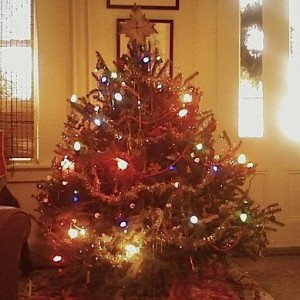 Mrs. T and I put up Christmas trees last year and the year before that, and both of them meant the world to me. Things have been more than a little bit hectic for both of us in recent months, though, and since we’re only going to be together in Connecticut for nine days before we fly south to Florida, we discussed it on the phone while I was in Chicago and decided to forgo a tree this year.
Mrs. T and I put up Christmas trees last year and the year before that, and both of them meant the world to me. Things have been more than a little bit hectic for both of us in recent months, though, and since we’re only going to be together in Connecticut for nine days before we fly south to Florida, we discussed it on the phone while I was in Chicago and decided to forgo a tree this year.
On Monday afternoon she picked me up at the train station in New London and drove me to our place in rural Connecticut. We talked about our decision again, agreeing that we’d made the right call—which didn’t keep me from feeling wistful about not having a Christmas tree to enjoy.
No sooner did we get home than she jumped out of the car and ran inside while I opened the trunk, took out my suitcases, and dragged them to the door. I pushed it open and saw…you guessed it…a fully trimmed tree, all lit up.
 I couldn’t say anything at first. I’m sure you can guess why. Then I had the presence of mind to quote from memory the last couple of lines of a scene from Satchmo at the Waldorf that Barry Shabaka Henley, Charles Newell, and I were working on just last week in the rehearsal room of Chicago’s Court Theatre. “Lucille” is, of course, Louis Armstrong’s fourth and last wife, and the story he tells in the play is one that Armstrong loved to tell in real life:
I couldn’t say anything at first. I’m sure you can guess why. Then I had the presence of mind to quote from memory the last couple of lines of a scene from Satchmo at the Waldorf that Barry Shabaka Henley, Charles Newell, and I were working on just last week in the rehearsal room of Chicago’s Court Theatre. “Lucille” is, of course, Louis Armstrong’s fourth and last wife, and the story he tells in the play is one that Armstrong loved to tell in real life:
We get married, Lucille goes out on the road with me and it’s Christmas. Come back to the hotel after the show and there’s a little tree right there in the room, all lit up like nothing you ever seen before. She done trimmed it and put on the lights for old Pops! Now I ain’t never had no Christmas tree before. We couldn’t afford nothing like that back in New Orleans. Then I go out in the world, hit the road, nobody ever thought to put up no tree for me in no hotel room—not till Lucille. I come in, see that tree in the corner, and she say, “Merry Christmas, Louis!” And you know what? I wouldn’t let her turn it off. Lay in bed all night looking at them pretty lights winking and blinking, and I say to myself, “Satch, you done lucked out. Better do what you gotta do to hang onto that gal. You ain’t gonna do no better long as you live.”
You never saw anybody smile as big as Mrs. T did right then. Unless it was me.
The so-called Proust Questionnaire circulates in a number of variably authentic versions. I filled out one of them earlier this year, having forgotten that I filled out a different version a decade earlier. It turns out that most of the questions overlap, so I thought it might be interesting to compare my answers:
What is your most marked characteristic?
• In 2005: curiosity
• In 2015: determination—and, I hope, fairness
What is the trait you most deplore in yourself?
• In 2005: impatience
• In 2015: the same
What do you most value in your friends?
• In 2005: kindness and warmth
• In 2015: patience
What is the quality you most like in a man?
• In 2005: the ability to argue without becoming angry
• In 2015: kindness
What is the quality you most like in a woman?
• In 2005: a sense of the absurd
• In 2015: kindness
What is it that you most dislike?
• In 2005: smugness. “I detest a man who knows that he knows” (Justice Holmes)
• In 2015: any species of ideology, secular or religious, that issues in mass murder
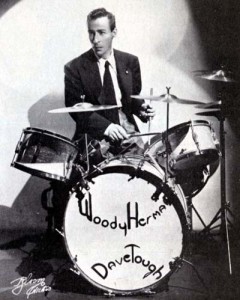 Which talent would you most like to have?
Which talent would you most like to have?
• In 2005: I wish I could dance like Fred Astaire. (I wish I could walk like Fred Astaire.) Failing that, I wish I could play drums like Dave Tough
• In 2015: I wish that I could play piano like Nat Cole and/or dance like Fred Astaire
What is your favorite occupation?
• In 2005: conversation with a loved one over a good meal
• In 2015: writing—but when I’m engaged in it, I’m not conscious of enjoying myself
What is your idea of perfect happiness?
• In 2005: the same as my favorite occupation, minus the meal and in closer proximity
• In 2015: rehearsing a show
What do you regard as the lowest depth of misery?
• In 2005: Siegfried
• In 2015: sitting through any opera by Philip Glass
Where would you like to live?
• In 2005: America, in the Fifties
• In 2015: Florida’s Sanibel Island
Who are your favorite writers?
• In 2005: Johnson, Trollope, Dostoevsky, James, Conrad, Fitzgerald, Colette, Waugh, Flannery O’Connor, M.F.K. Fisher
• In 2015: Kingsley Amis, the Boswell of the Life of Johnson, Colette, Edwin Denby, M.F.K. Fisher, Justice Holmes, A.J. Liebling, John P. Marquand, Somerset Maugham, Flannery O’Connor, Anthony Powell, Dawn Powell, I.B. Singer, Trollope, Waugh. For entertainment: Patrick O’Brian, Rex Stout, Donald Westlake, P.G. Wodehouse
Who are your favorite poets?
• In 2005: Shakespeare, Dickinson, Hardy, Frost, Yeats, Auden, Larkin
• In 2015: Anna Akhmatova, Dickinson, Frost, Hardy, Larkin, Shakespeare, Yeats
Who is your favorite male character in fiction?
• In 2005: Father Hugh Kennedy, in Edwin O’Connor’s The Edge of Sadness. Runner-up: Lucky Jim Dixon
• In 2015: Hugh Moreland in Anthony Powell’s A Dance to the Music of Time
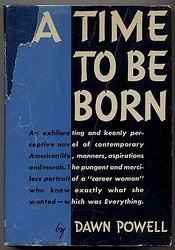 Who is your favorite female character?
Who is your favorite female character?
• In 2005: Vicky Haven in Dawn Powell’s A Time to Be Born
• In 2015: the same
What are your favorite names?
• In 2005: Anne, Ali, Erin, Heather, Kate, Laura, Libby, Tanaquil (all accented on the first syllable, for what it’s worth)
• In 2015: Emily, Julia, Laura
What is your present state of mind?
• In 2005: frazzled but expectant
• In 2015: distracted and somewhat anxious
How do you wish to die?
• In 2005: in a state of grace, after having seen my last, best book through the press
• In 2015: with sufficient presence of mind to mutter “So here it is at last, the distinguished thing!”
What is your motto?
• In 2005: “Be generous and delicate and pursue the prize” (Henry James). Alternate motto for especially hectic days: “If there’s no alternative, there’s no problem” (James Burnham)
• In 2015: “If there’s no alternative, there’s no problem”
* * *
Fred Astaire plays drums in A Damsel in Distress, directed by George Stevens in 1937. The song is “Nice Work if You Can Get It,” by George and Ira Gershwin, and the dance was choreographed by Astaire and Hermes Pan. This scene was shot in a single continuous take:
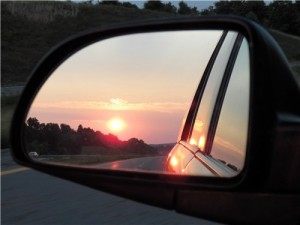 From 2005, ten years ago today:
From 2005, ten years ago today:
All changed, changed utterly, I told myself, knowing too well that it won’t be so easy as that. Every day I’ll get out of bed and do battle with the demon who drives me, and every night I’ll go to bed and rest up for the next day’s fight. Some days I’ll win, some days I won’t. The trick, I suppose, will be to win more often than not, to slowly drain the congestion of overwork from my life as the doctors at Lenox Hill Hospital drained the excess fluid from my heart and lungs. Would there were a pill for that! Instead I must teach myself to make more room for life and love and everything else I spent the past few years pushing away. That’s something I learned in the hospital: if you want to be loved, you have to make room….
Read the whole thing here.
| M | T | W | T | F | S | S |
|---|---|---|---|---|---|---|
| 1 | 2 | 3 | 4 | 5 | 6 | |
| 7 | 8 | 9 | 10 | 11 | 12 | 13 |
| 14 | 15 | 16 | 17 | 18 | 19 | 20 |
| 21 | 22 | 23 | 24 | 25 | 26 | 27 |
| 28 | 29 | 30 | ||||
An ArtsJournal Blog